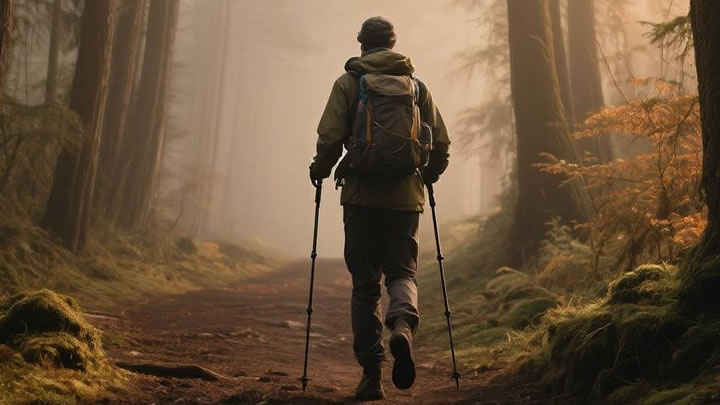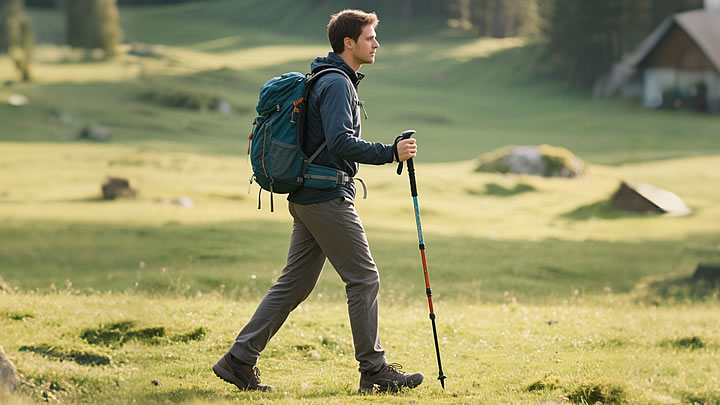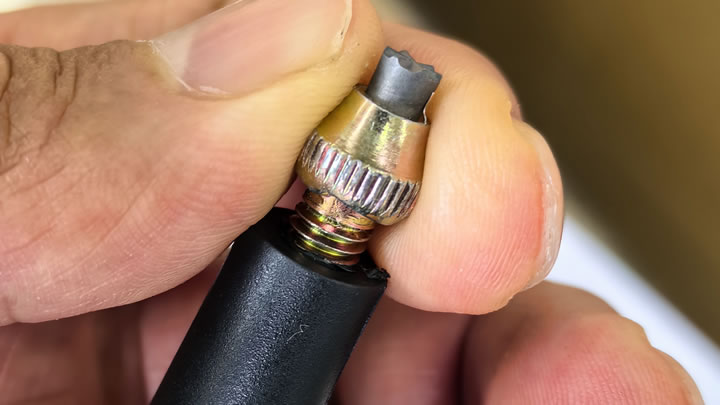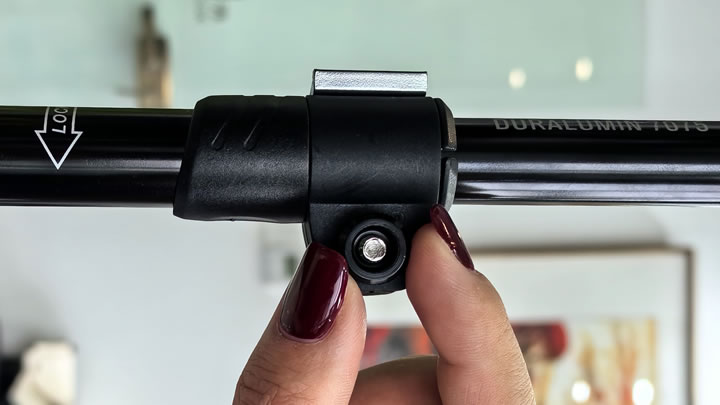Walking Poles for Balance on Uneven Terrain: Your Ultimate Stability Solution
Venturing onto uneven terrain—whether rocky paths, root-covered trails, or loose gravel—presents significant challenges to human balance and stability. This is where walking poles transform from optional accessories to essential safety equipment. By understanding how to leverage poles specifically for balance, you can confidently navigate terrain that would otherwise be intimidating or dangerous.
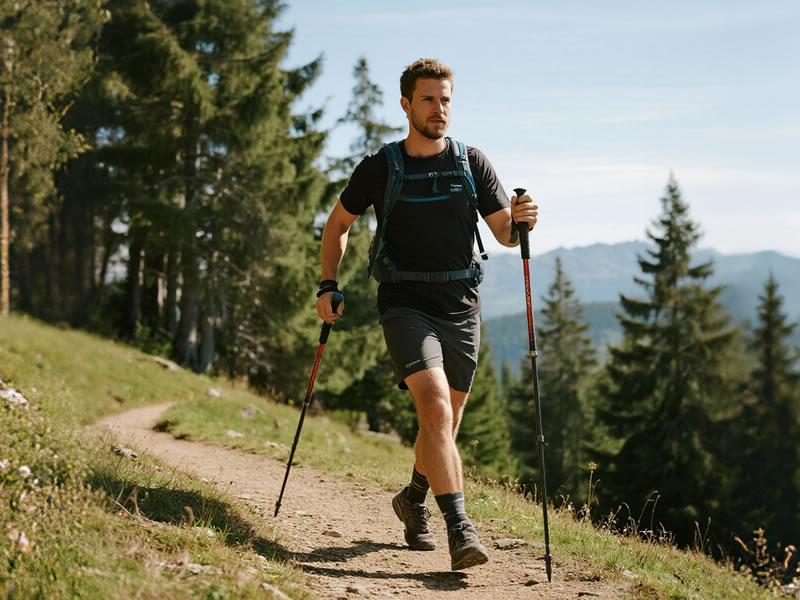
The Biomechanics of Stability: Why Poles Work
Human bipedal walking is inherently less stable than quadrupedal movement. Walking poles effectively restore this quadrupedal advantage by providing two additional points of contact with the ground. This creates a dynamic "tripod" or "quadpod" support system that dramatically increases your base of stability. On uneven surfaces, this system provides several crucial benefits:
- Proactive Stability Testing: You can probe uncertain ground before committing your full weight. A quick tap can reveal a wobbly rock, a hidden soft spot, or an unstable surface.
- Continuous Micro-Corrections: With poles in hand, your body makes constant, subtle adjustments to maintain balance. Each pole plant acts as an anchor point around which you can stabilize yourself, preventing the larger, more dramatic stumbles that lead to falls.
- Lowered Center of Gravity: Leaning slightly on your poles effectively widens your stance and lowers your center of gravity, making you significantly more stable, much like a tripod is more stable than a monopod.
Key Features for Superior Balance on Uneven Ground
Not all poles are created equal when your primary goal is stability on challenging terrain.
- Robust Locking Mechanisms: A pole that collapses unexpectedly is worse than no pole at all. Flick-lock or lever-lock systems are essential for their reliability and ability to maintain a rigid length under lateral stress. Avoid twist-lock mechanisms, which are prone to slipping.
- Durable, Aggressive Tips: Balance relies on a secure connection with the ground. Carbide or tungsten carbide tips are non-negotiable. Their hardness and sharpness bite into rock, ice, and hard-packed soil, providing a secure anchor point. Ensure the tips are replaceable, as they will wear down over time.
- Responsive Grip and Strap Combo: When you start to slip, you need instant control. Cork or high-density foam grips provide a secure, non-slip hold, even when sweaty. A well-designed, padded wrist strap allows you to apply downward pressure without a death grip, conserving hand energy and providing better control.
- Appropriate Stiffness and Weight: The pole should feel like an extension of your arm. Aluminum poles (7075 alloy) are often preferred for their durability and predictable flex on rough terrain. While carbon fiber is lighter, ensure you choose a model robust enough to handle the lateral stresses of catching a fall.
Mastering the Technique for Maximum Stability
Owning the right poles is only half the battle; using them correctly is what unlocks their true potential for balance.
- The Rhythmic Plant: Maintain the natural opposite arm/leg rhythm (right pole with left foot). This creates a continuous cycle of support, with at least one or two points of contact with the ground at all times.
- Shorten Your Grip on Ascents: For steep, uneven climbs, "choking up" on the grip below the handle can provide better leverage and control.
- Widen Your Base on Descents: On loose or very uneven descents, plant your poles slightly wider than your shoulders. This creates a more stable, triangular base to control your speed and prevent a forward pitch.
- The "Double Plant" for Obstacles: When crossing a large rock or log, plant both poles firmly on the far side first. Use them as a stable anchor to support your weight as you step over.
- Use Straps Correctly: Thread your hand up through the strap from below, then rest the strap across your palm and grip the handle. This allows you to push down through the strap, transferring force to your skeleton and enabling a relaxed grip.
Top Pole Recommendations for Technical Terrain
- Black Diamond Trail Pro: Built with tough 7075 aluminum and featuring the ultra-reliable FlickLock Pro system, these poles are workhorses designed for abuse and providing unwavering stability.
- MSR DynaLock Ascent: Featuring MSR's unique dual-lever DynaLock system, these poles offer exceptional clamping strength and are built for the most demanding off-trail conditions where failure is not an option.
- LEKI Micro Vario Carbon: For those who want a lighter carbon option without sacrificing much durability, the LEKI's Speed Lock system and reliable construction make them a great choice for long days on rugged trails.
Conclusion: An Investment in Confidence
Walking poles for uneven terrain are not a crutch; they are a tool for empowerment. They provide the confidence to explore more challenging landscapes, secure in the knowledge that you have the means to prevent a misstep from becoming a fall. By reducing the cognitive load of constantly worrying about your footing, they allow you to relax and fully immerse yourself in the beauty of the natural world. For anyone regularly navigating rocky paths, stream crossings, or unpredictable trails, a quality pair of poles tuned for balance is one of the most valuable investments you can make in your safety and enjoyment.

